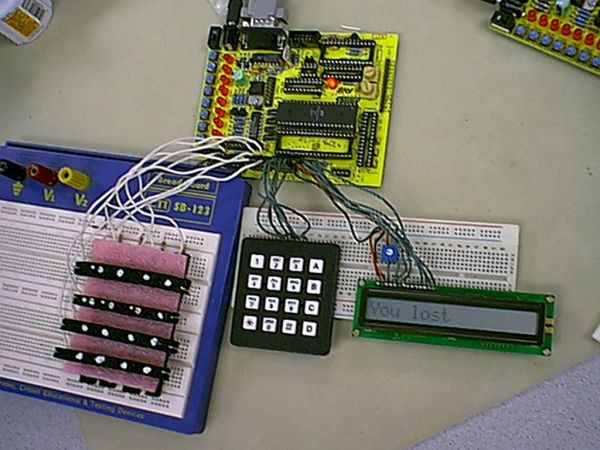Introduction
Sound byte
For our final project, we are redesigning the classic battleship game to suit the needs of engineers. We are removing the need for communication, but keeping the feel of battleship.
So what are we really doing?
Instead of having engineers mumble battleship attacks, all communication is handled by two micro controllers, one for each player. The players interact with their micro controllers through the game board, a keypad, and a LCD. The micro controllers then talk to each other to play the game.
Why?
We wanted a project that we would actually use and that involved building components. Given our interest in games, we thought building a game with an interactive board would be both challenging and cool.
What is Battleship?
Battleship is a game that involves both strategy and luck. The goal is to conceal the location of your ships while finding and destroying your opponent�s ships. Each player has a board to strategically place their ships which are located by multiple grid coordinates. A player �hits� his enemy�s ships by correctly guessing the coordinates. Each player also has a board to record previous hits or misses. You win by destroying all your enemy�s ships.
High Level Design
The user-interface consists of two identical setups, one for each player. Each setup consists of a LCD display, keypad, and a battleship board. The LCD display is used to prompt the user for commands and to display the results. The keypad is used to enter in the attack coordinates. The battleship board is for the user to place their boats. All the components of the setup are tied together and controlled by an ATMEL 8525 microcontroller. The two setups then interface with each other through the serial communications port on the Atmel STK-200 development board.
For more detail: gEECShip


